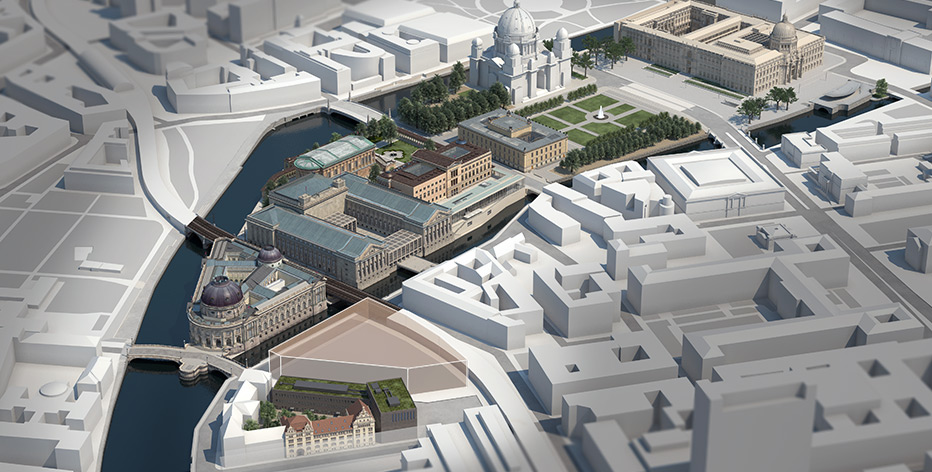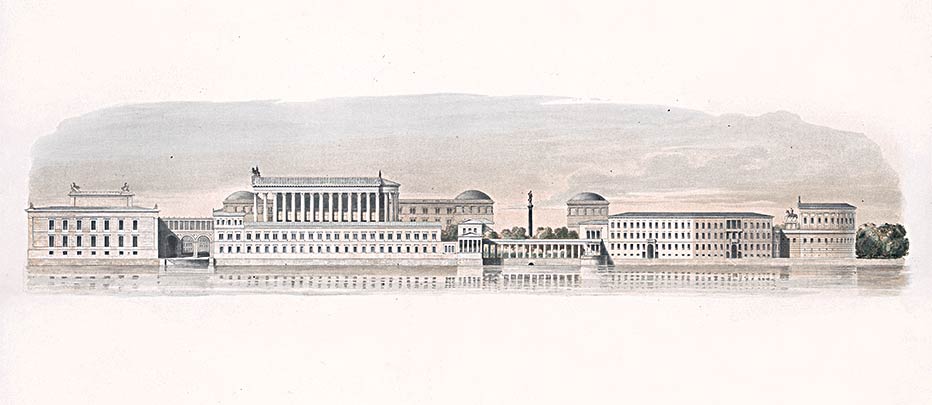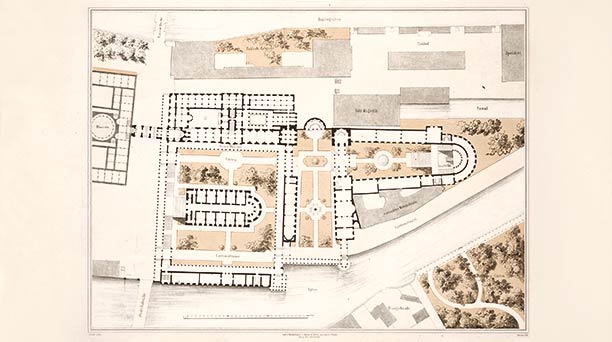The Museum Island Master Plan agreed upon in 1999 has a historical precursor: quite early on there were plans to create a museum complex on the Spree Island. In 1841, King Friedrich Wilhelm IV of Prussia ordered that “the entire Spree Island behind the museum be redeveloped into a sanctuary for art and science.”
Stüler's Vision
Based on the king’s sketches, the architect Friedrich August Stüler designed a plan in 1841 that specified the basic structure of the future museum complex. Stüler was a student of the architect of the Altes Museum, Karl Friedrich Schinkel. Both the Neues Museum and today’s Alte Nationalgalerie were constructed according to Stüler’s plans. When a railroad bridge was built across the Spree Island in 1882, a new situation was created on the tip of the island. This had to be taken into account by the architects of the buildings constructed after that. Hence, the Bode-Museum faces north and the Pergamonmuseum is oriented westward.


